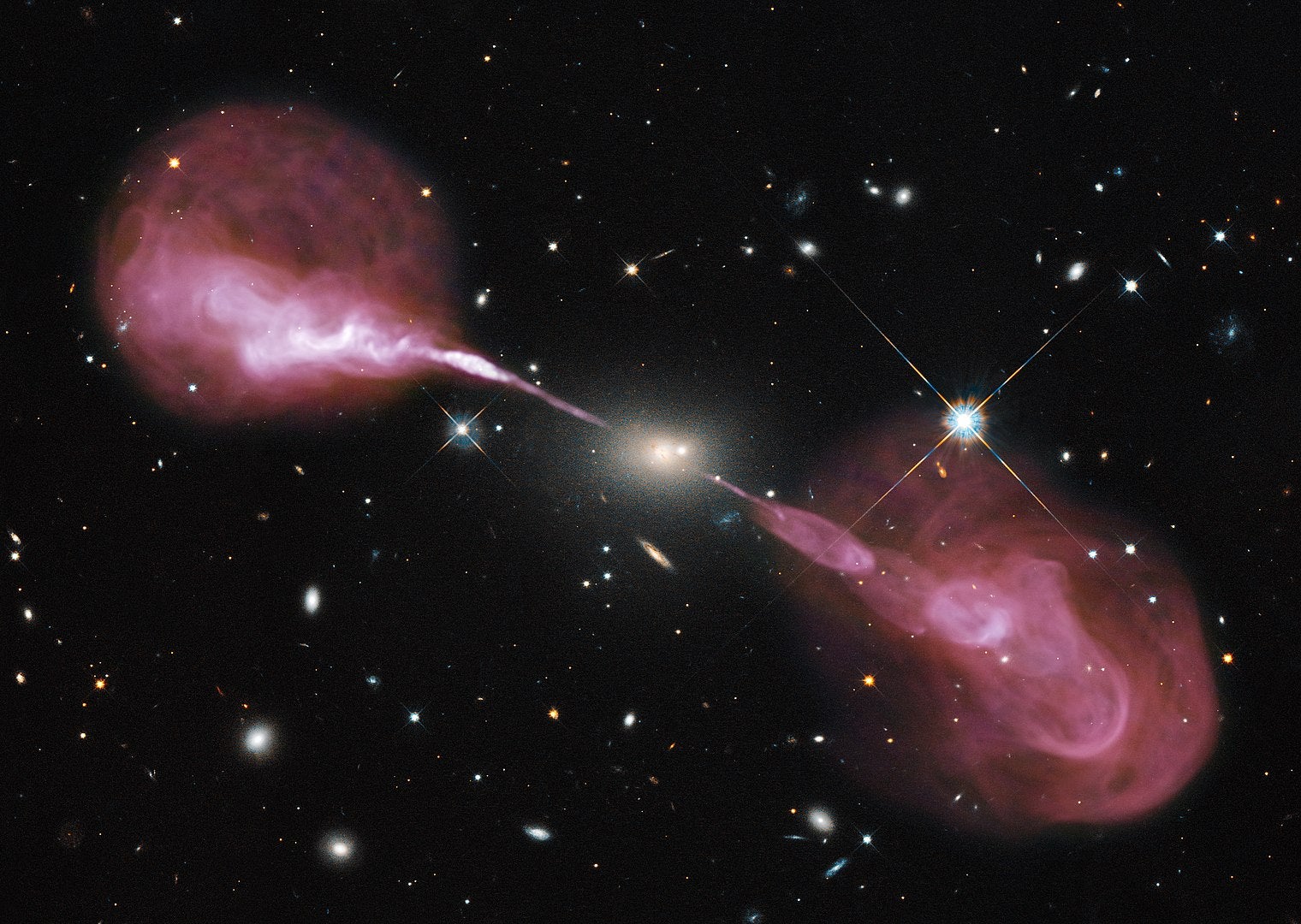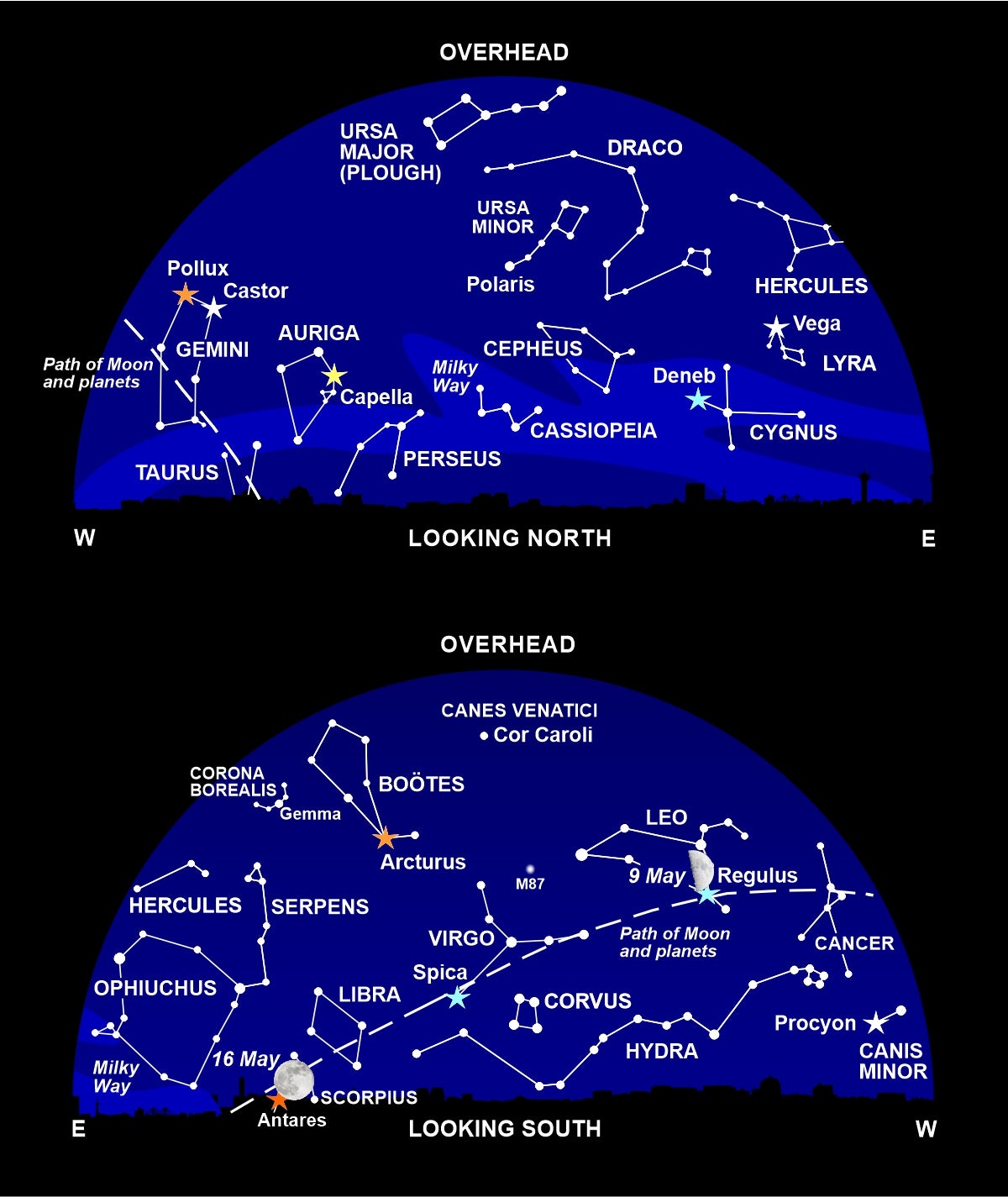Stargazing in May: The black secret in a galaxy’s heart
Nigel Henbest on an astronomer’s remarkable insight: that the ‘central engine’ of galaxies is a searingly hot disc of gas swirling around a mammoth black hole

Your support helps us to tell the story
From reproductive rights to climate change to Big Tech, The Independent is on the ground when the story is developing. Whether it's investigating the financials of Elon Musk's pro-Trump PAC or producing our latest documentary, 'The A Word', which shines a light on the American women fighting for reproductive rights, we know how important it is to parse out the facts from the messaging.
At such a critical moment in US history, we need reporters on the ground. Your donation allows us to keep sending journalists to speak to both sides of the story.
The Independent is trusted by Americans across the entire political spectrum. And unlike many other quality news outlets, we choose not to lock Americans out of our reporting and analysis with paywalls. We believe quality journalism should be available to everyone, paid for by those who can afford it.
Your support makes all the difference.It’s every young astronomer’s dream: to make pioneering observations of the sky with the world’s most powerful telescope. And that dream came true for me in 1972, when I began research at Cambridge and had the chance to use the newly opened Ryle Telescope. Devised by Sir Martin Ryle, the astronomer royal, this was the most penetrating radio telescope of its time.
My research focused on radio galaxies, distant star-cities straddled by giant clouds of energy, that are emitting radiation at radio wavelengths. The big puzzle was to explain why these energetic clouds existed in the empty space outside the galaxy itself.
We soon found out. The probing gaze of the Ryle Telescope revealed that each of these galaxies harboured a tiny source of intense radio waves right at its heart. And often we could discern a stream of energy stretching out from this “central engine” to the radio-emitting clouds outside the galaxy.
Clearly the galaxy’s mighty energy was being created in the central engine, and was channelled out into empty space where it expanded into the energetic clouds that astronomers had already observed. But that left the bigger problem: what was the central engine, and how was it powered?
Across the road, in Cambridge’s Institute of Astronomy, leading theorist Donald Lynden-Bell came up with an audacious answer: the central engine was a searingly hot disc of gas that was swirling around a mammoth black hole, billions of times heavier than the sun. It was a bold suggestion, at a time when many scientists regarded black holes more as science fiction than science fact.
A few years later, an international team used the large optical telescope on Palomar Mountain in California, to analyse the light coming from the stars in the central region of the radio galaxy M87 – a giant star-system you can see for yourself tonight, if you train a small telescope to the region between the constellations Virgo and Leo (see the starchart).
They discovered that the stars in the core of M87 are whirling round at tremendous speeds, under the gravitational influence of a something small but with immense gravity. They deduced it was a black hole, as heavy as 5 billion suns.
And in 2019, radio astronomers saw that black hole directly, using the ultimate radio telescope. The Event Horizon Telescope links up individual radio dishes all over the world, from Europe and Hawaii to the South Pole, to create a telescope as wide as our planet. Tuning into the centre of M87, they saw a disc of hot gas – and silhouetted against it, the black hole itself.
Sad to say, Donald Lynden-Bell had died the previous year, so he never saw his theory of the central engine completely vindicated. But in the time since he came up with his remarkable insight, astronomers have deduced that almost all galaxies harbour a central black hole. If a galaxy isn’t actively broadcasting radio waves to the universe, it’s because the supply of gas to the central engine has dried up temporarily, and the black hole is currently resting.
There’s strong evidence of a black hole, as heavy as 4 million Suns, in the core of our own galaxy, the Milky Way. And this month, the Event Horizon Telescope team is set to unveil an even more remarkable result than their observation of the black hole in M87. It will be the first image of our own galaxy’s beating heart, the black hole at the centre of the Milky Way.
What’s up
Orange Arcturus lies high in the southern sky, its colour contrasting with pure white Vega towards the northeast. Look carefully between them to spot a small semi-circle of stars: Corona Borealis (the Northern Crown). The jewel in this cosmic tiara – the bright star in the centre – is officially known as Alphecca, though I prefer another traditional name, Gemma.
Below Gemma and Arcturus, you’ll find the faint sprawling constellations of Hercules and Ophiuchus (the Serpent Bearer). To their right lies Y-shaped Virgo (the Virgin), and the feline outline of Leo (the Lion).

During the first few days of May, Mercury is low in the northwest after sunset. But you’ll have to wait for the early hours of the morning to catch the other bright worlds of the solar system.
The most brilliant planets, Venus and Jupiter, are very close together at the start of the month, low in the east before the sun rises. You’ll find Mars to the right, and Saturn further to the right again. As the month progresses, Jupiter moves towards Mars, and passes just above the Red Planet on the morning of 29 May.
If you’re planet-watching before dawn on 6 May, watch out for shooting stars. These are tiny fragments of Halley’s Comet burning up high above our heads. Perspective makes the meteors appear to stream out from a particular star in the constellation Aquarius, giving this display its moniker, the Eta Aquarid meteor shower.
The Eta Aquarids are an annual event, but we may be treated to an unusual outburst of shooting stars on the very last night of the month. The Tau Herculids are usually too sparse to rate a mention in this column, but this year we pass through a dense stream of debris that its parent comet – Schwassmann-Wachmann 3 – dumped into space when it disintegrated in 1995, and may provide a spectacular meteor display.
One final sky sight to catch this month is a total eclipse of the moon, though it’s not too spectacular as seen from Britain. The moon starts moving into the Earth’s shadow at 3.27am, and it’s totally eclipsed by 4.29am – but by then the sky is bright with dawn light and the moon is just about to set.
Diary
6 May, before dawn: maximum of Eta Aquarid meteor shower
9 May, 1.21am: first Quarter Moon near Regulus
13 May: moon near Spica
16 May, 5.14am: full Moon, total lunar eclipse
22 May, 7.43pm: last Quarter Moon near Saturn
29 May, before dawn: Jupiter very near Mars
30 May, 12.30pm: new Moon
31 May: maximum of Tau Herculid meteor shower
‘Philip’s 2022 Stargazing’ (Philip’s £6.99) by Nigel Henbest reveals everything that’s going on in the sky this year

Join our commenting forum
Join thought-provoking conversations, follow other Independent readers and see their replies
Comments